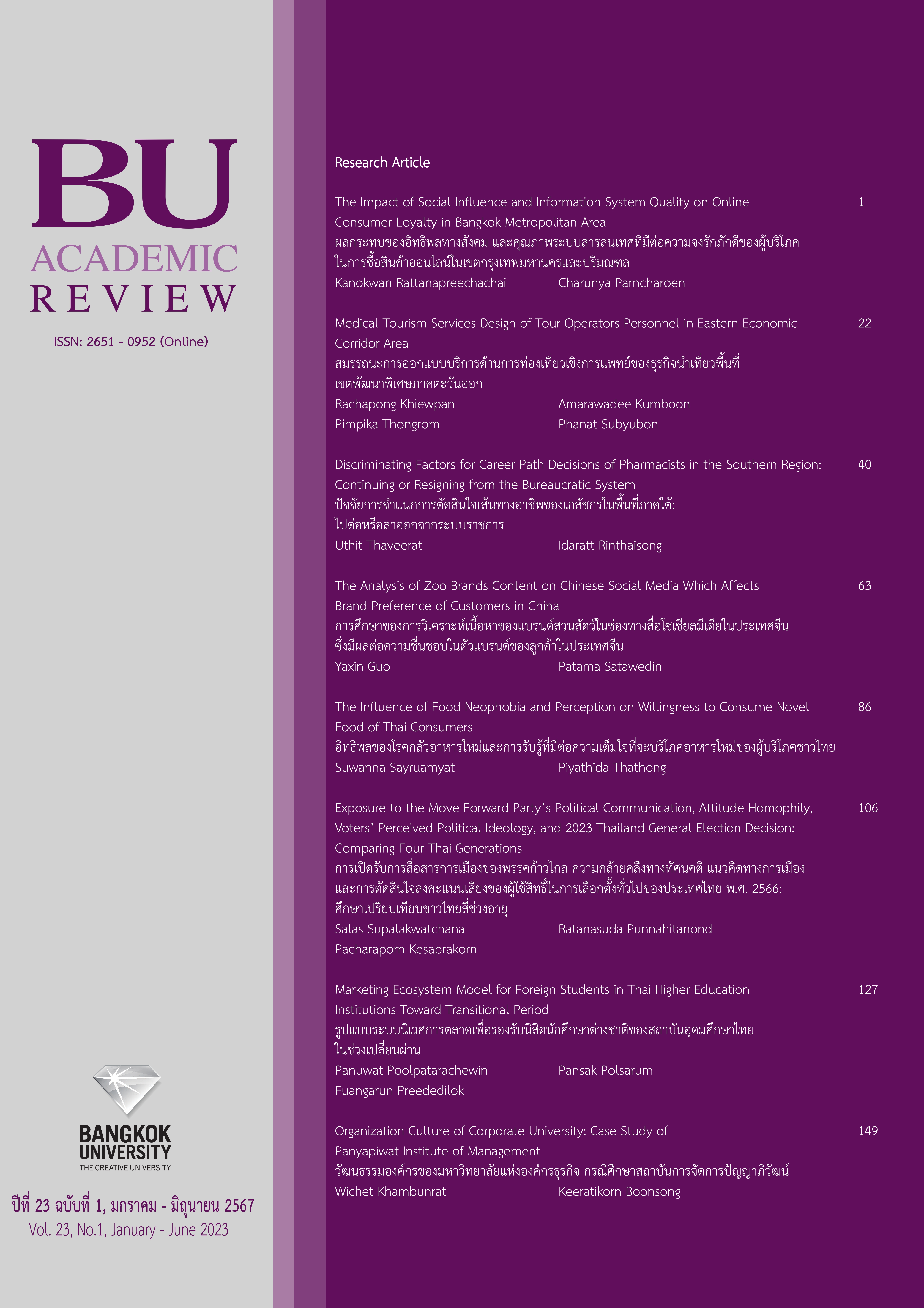The Application of Generative AI in the Film Industry and Related Legal Concerns
Main Article Content
Abstract
This article discusses the application of generative AI in the film industry. Generative AI is a type of artificial intelligence capable of creating a wide array of new content, including sounds, scripts, images, texts, scenario simulations, and videos. By utilizing deep learning, generative AI learns from existing data and acquired information to generate new content based on user prompts. Additionally, this article presents experimental use cases of generative AI, analyzing its advantages and areas of caution, along with potential legal implications, especially concerning copyright infringement issues.
Article Details

This work is licensed under a Creative Commons Attribution-NonCommercial-NoDerivatives 4.0 International License.
The manuscript submitted for publication must be the original version, submitted only to this particular journal with no prior acceptance for publication elsewhere in other academic journals. The manuscript must also not violate the copyright issue by means of plagiarism.
References
Abdullahi, A. (2024). Generative AI models: A complete guide. Retrieved March 1, 2024, from https://www.eweek.com/artificial-intelligence/generative-ai-model/
Alahmed, Y., Abadla, R., Badri, A. A., & Ameen, N. (2023). “How does ChatGPT work” Examining functionality to the creative AI CHATGPT on X's (Twitter) platform. In 2023 Tenth International Conference on Social Networks Analysis, Management and Security (SNAMS) (pp.1-7). UAE-Abudhabi: IEEE.
British Broadcasting Corporation [BBC]. (2023). Simple guide to help you fit understand AI. Retrieved March 1, 2024, from https://www.bbc.com/pidgin/resources/idt-74697280-e684-43c5-a782-29e9d11fecf3
CoinEx (2023). Praphēt khō̜ng panyā pradit sām radap mī ʻarai bāng [What are the 3 levels of artificial
intelligence?]. Retrieved March 1, 2024, from https://www.coinex.com/th/blog/3279-what-are-the-3-levels-of-artificial-intelligence
Copilot Designer. (2023). Create images from words with AI. Retrieved March 4, 2024, from https://www.bing.com/create.
Coursera. (2024). What is artificial intelligence? Definition, uses, and types. Retrieved March 2, 2024, from https://www.coursera.org/articles/what-is-artificial-intelligence
Dall-E. (2024). DALL·E 3 understands significantly more nuance and detail than our previous systems, allowing you to easily translate your ideas into exceptionally accurate images. Retrieved March 5, 2024, from https://openai.com/dall-e-3
Daniel, C., Grasser, J., & Collis, J. (2023). Copyright protection for AI works: UK vs US. Retrieved March 19, 2024, from https://www.iptechblog.com/2023/07/copyright-protection-for-ai-works-uk-vs-us/
Deakin University. (2023). Types of generative AI. Retrieved March 1, 2024, from https://deakin.libguides.com/generative-AI/types
Escott, E. (2017). What are the 3 types of AI? A guide to narrow, general, and super artificial intelligence. Retrieved March 2, 2024, from https://codebots.com/artificial-intelligence/the-3-types-of-ai-is-the-third-even-possible
Flynn, A., Clough, J., & Cooke, T. (2021). Disrupting and preventing deepfake abuse: Exploring criminal law responses to AI-Facilitated abuse. In A. Powell, A. Flynn, & L. Sugiura, (Eds.), The Palgrave Handbook of Gendered Violence and Technology (pp. 583-603). Cham: Palgrave Macmillan.
Howell, B. A. (2023). Thaler v. perlmutter (2023). Retrieved March 19, 2024, from https://caselaw.findlaw.com/court/us-dis-crt-dis-col/114916944.html
Invideo AI. (2024). Generate AI videos with just text. Retrieved March 1, 2024, from https://invideo.io/make/ai-video-generator/
Leonardo AI. (2023). AI art generator. Retrieved March 5, 2024, from https://leonardo.ai/
McGee, R. W. (2023). ChatGPT and copyright infringement: An exploratory study. Retrieved March 22, 2024, from https://papers.ssrn.com/sol3/papers.cfm?abstract_id=4578430
McKinsey. (2023). What is generative AI? Retrieved March 1, 2024, from https://www.mckinsey.com/ featured-insights/mckinsey-explainers/what-is-generative-ai#/
Mohammad, A. F., Clark, B., Agarwal, R., & Summers, S. (2023). LLM/GPT generative AI and Artificial General Intelligence (AGI): The next frontier. In 2023 Congress in Computer Science, Computer Engineering, & Applied Computing (CSCE) (pp. 413-417). Las Vegas: American Council on Science and Education.
Netayasupha, A., & Arreewittayalerd, C. (2013). Khamʻathibāi kotmāi likkhasit (Phim khrang thī 1) [Explanation of copyright law (1st ed.)]. Bangkok: Winyuchon Publication House.
Rana, M. S., Nobi, M. N., Murali, B., & Sung, A. H. (2022). Deepfake detection: A systematic literature review. IEEE Access, 10, 25494-25513.
Runway. (2024). Advancing creativity with artificial intelligence. Retrieved March 5, 2024, from https://runwayml.com
Suno. (2024). Make a song about anything. Retrieved April 30, 2024, from https://suno.com/
Thongmeensuk, S. (2022). Likkhasit ngān pen khō̜ng khrai mư̄a AI pen phūsāngsan [Who does own the copyright when AI is the creator?]. Retrieved March 18, 2024, from https://www.bangkokbiznews.com/tech/innovation/1030842
Totlani, K. (2023). The evolution of generative AI: Implications for the media and film industry. International Journal for Multidisciplinary Research (IJFMR), 5(5), 1-11.
Zirpoli, C. T., & Attorney, L. (2023). Generative artificial intelligence and copyright law. Retrieved April 29, 2024, from https://crsreports.congress.gov/product/pdf/LSB/LSB10922
Zoss, G., Chandran, P., Sifakis, E., Gross, M., Gotardo, P., & Bradley, D. (2022). Production-ready face re-aging for visual effects. ACM Transactions on Graphics (TOG), 41(6), 1-12.


